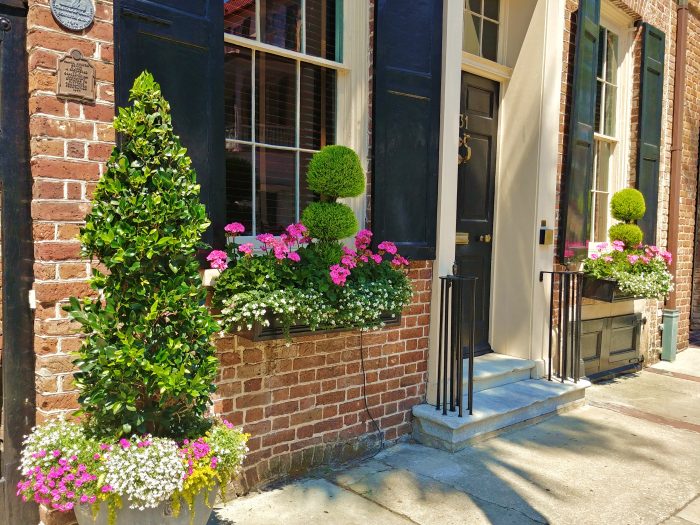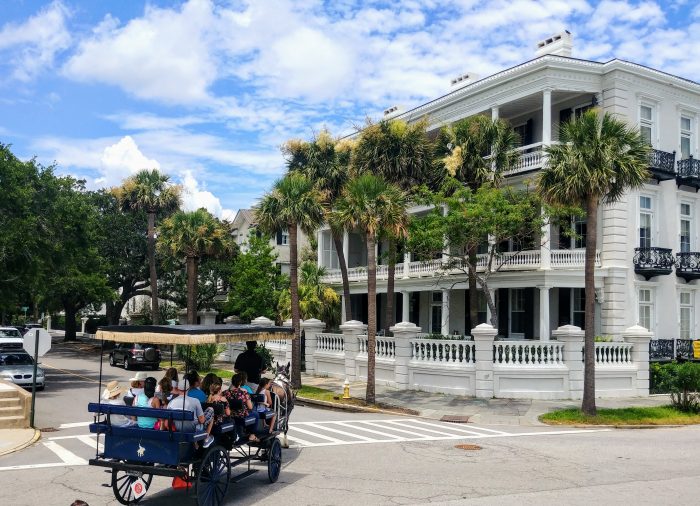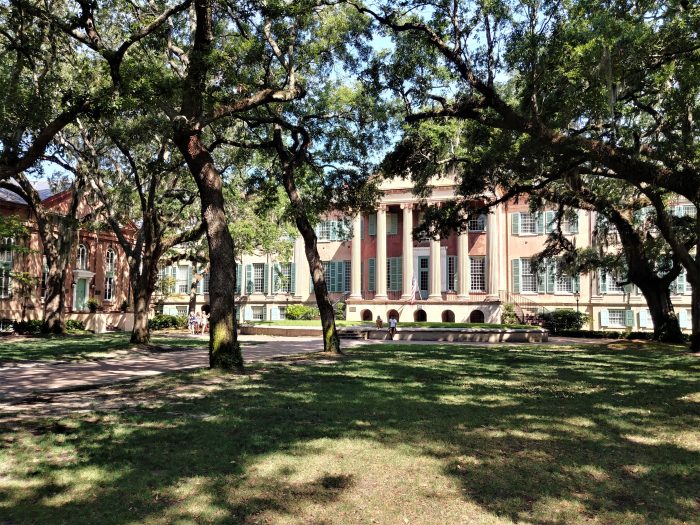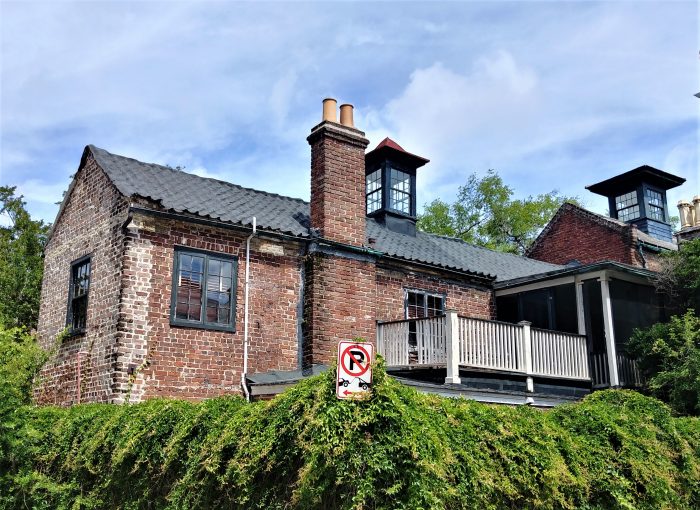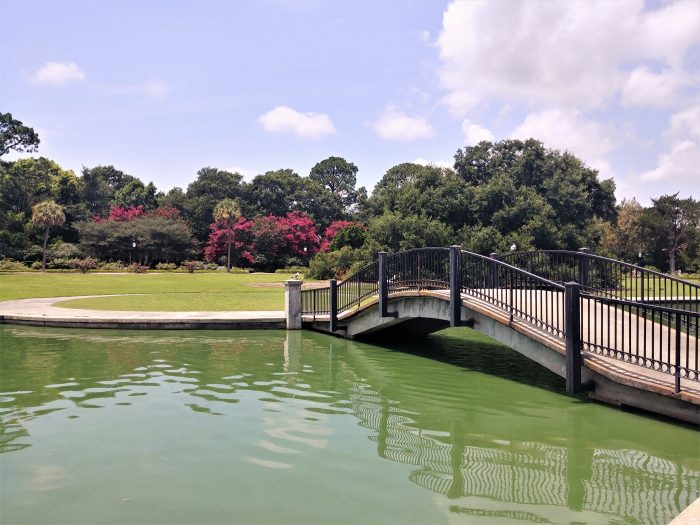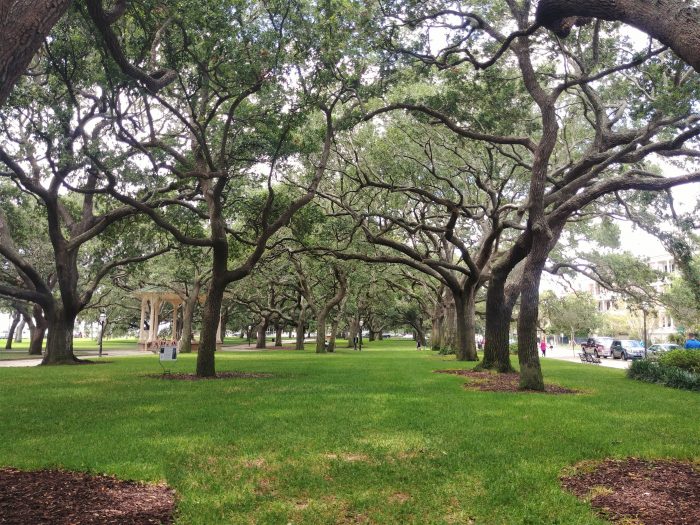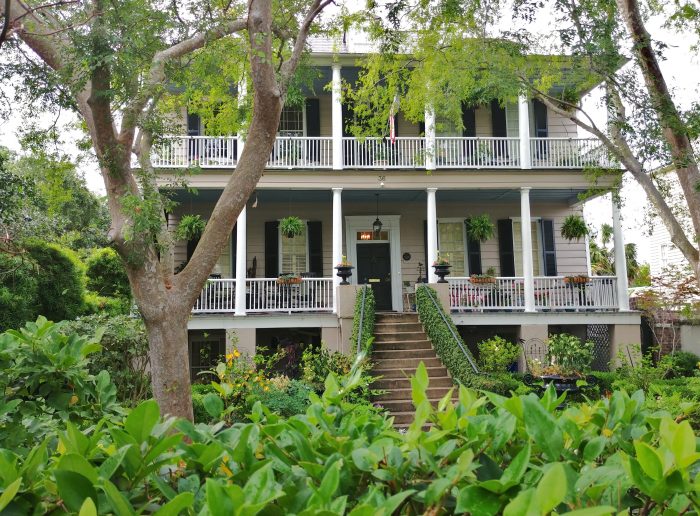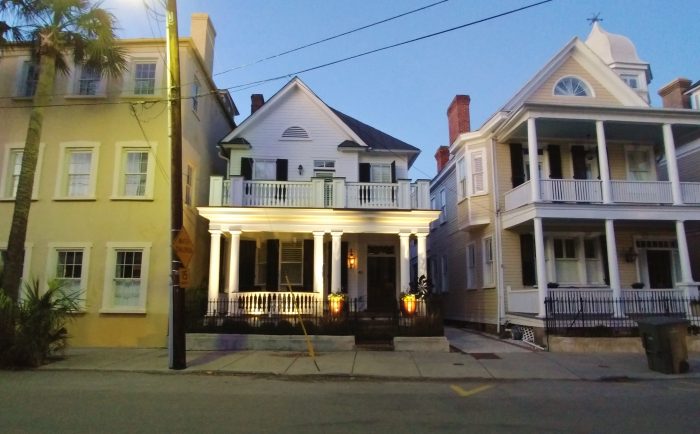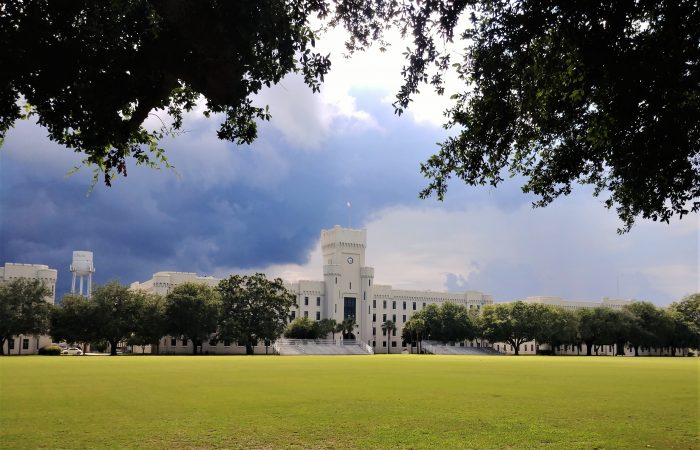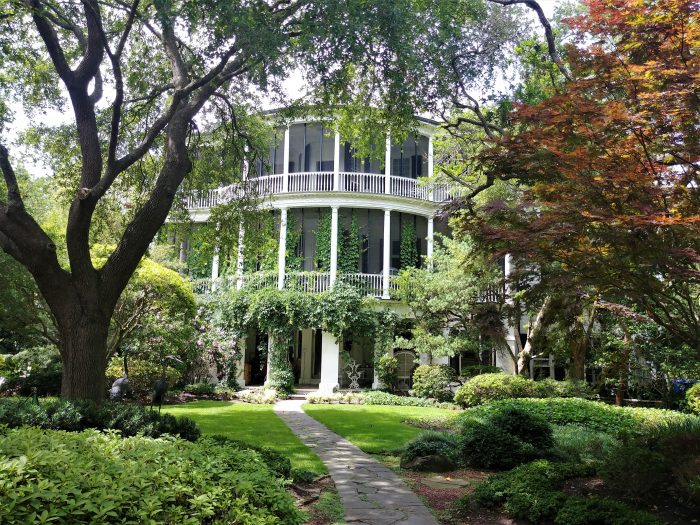These beautiful plantings are next to the Dock Street Theatre. The building which the theater has occupied since 1935 was built in 1809 as the Planter’s Hotel. It was repurposed into a theater after falling into disrepair following the Civil War and was going to be demolished.
Corner of the Batteries
A classic Charleston tableau. Located at the corner of East and South Battery, the Louis Desaussure House — the construction of which was completed about 1860 — had a front row street to the bombardment of Fort Sumter and the start of the American Civil War. The people would have had to stand on the piazzas, as the balconies on the East Battery side of the house were added later.
CofC
The Cistern Yard, backed by the beautiful Randolph Hall, is the epicenter of the College of Charleston. Founded in 1770, it is the 13th oldest country in the United States and counts three signers of the Declaration of Independence (Edward Rutledge, Arthur Middleton, and Thomas Heyward) and three signers the United States Constitution (John Rutledge, Charles Pinckney, and Charles Cotesworth Pinckney) among its founders.
Coates Row
This very cool looking post revolutionary building is part of a small complex called Coates Row, which fronts on East Bay Street. Built to house commercial uses, it still does today. This view is from East Elliott Street.
The Grove
You can find this pretty scene in Hampton Park, the largest public park on the Charleston peninsula. The land which Hampton Park now occupies was by 1769 part of a plantation known as The Grove, or Orange Grove Plantation. Over the years it has been the home for some pretty interesting things, including the South Carolina Inter-State and West Indian Exposition of 1901–1902, which was visited by President Theodore Roosevelt.
Night Heron Hangout
White Point Garden is one of the great public spaces in Charleston. In addition to being the home of these incredible live oak trees, a wonderful bandstand, beautiful statues, and impressive armament, it is the home of a whole lot of black-crowned night herons. With an active rookery, it can be noisy and busy spot.
Just Another Charleston House
There are so many wonderful houses in Charleston. This striking one is on Chapel Street in the tongue-twistingly named Mazyck-Wraggborough neighborhood.
Illuminated
The beautiful houses of Charleston come in all sorts of shapes and sizes. This smaller one on South Battery, tucked between two larger neighbors, is glowing in the early evening light.
El Cid
The parade grounds and one of the barracks of The Citadel, The Military College of South Carolina. Some of the locals and graduates call it “El Cid.”
Once Upon A Time
The Parker-Drayton House on Gibbes Street used to have an even better location. Before the Low Battery area in front of it was filled, the Ashley River used to run by its garden.
- « Previous Page
- 1
- …
- 93
- 94
- 95
- 96
- 97
- …
- 188
- Next Page »
